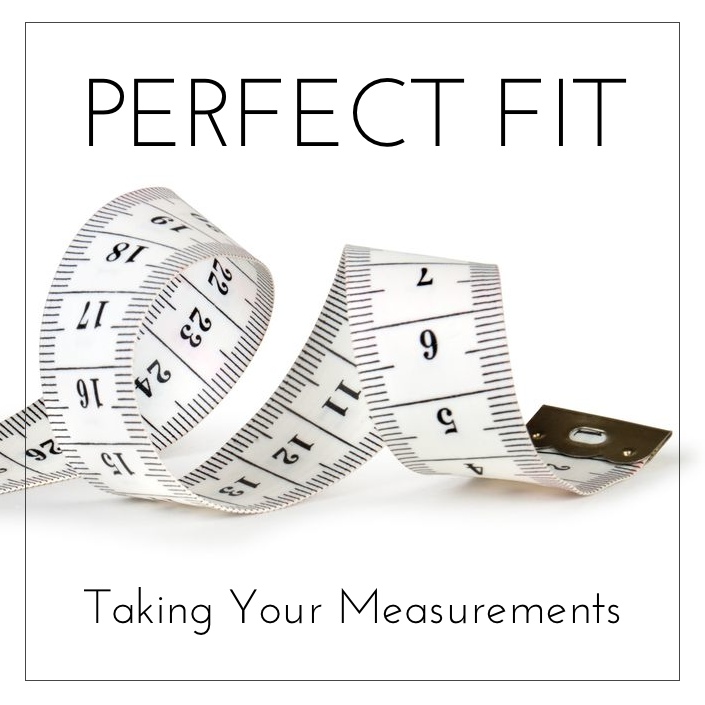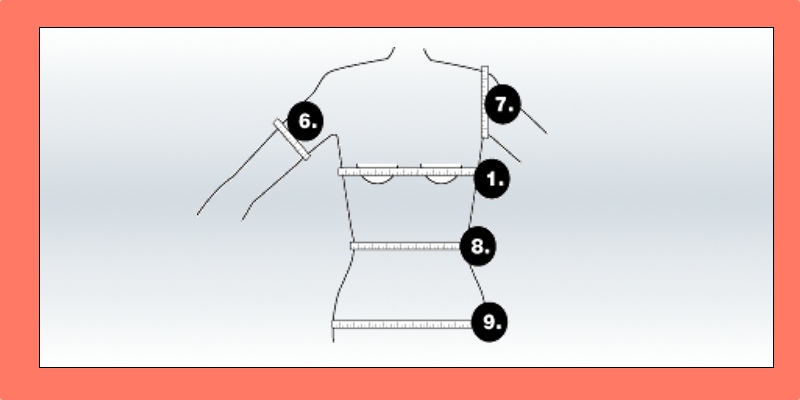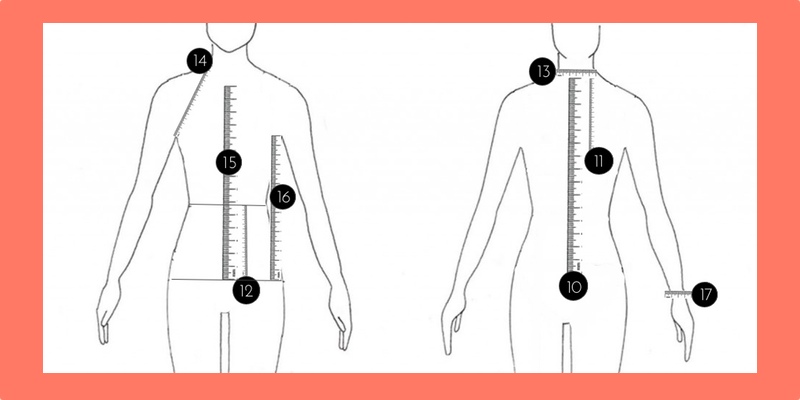Welcome to the Perfect Fit Series! Over the past few months I’ve been hearing from a lot of you that the most intimidating thing about knitting a sweater is getting a great fit. So I’ve decided to jump in and give you as much information as possible about how to get an excellently fitting sweater. This includes everything from measurements and ease to shaping in your stitch pattern and adjusting the fit of a preexisting pattern. Today we’re kicking off the series by teaching you how to take measurements of yourself. These measurements will be useful if you’re designing your own sweater or simply knitting from a pattern. The bottom line is that if you don’t know your measurements then it will be very difficult to make a sweater to fit those measurements.
You’ll get the most accurate body measurements if you wear just your undergarments, a body suit or a form-fitting tunic. Stand in front of a mirror to make sure that you’re standing straight and holding the tape measure in the correct place. Ideally, another person should take the measurements as you observe in the mirror. Measure all of the areas listed below and be sure to write down each measurement as you go.
This method of measuring will cover every measurement you would need for either a seamless or seamed sweater, top down or bottom up. Keep your measurements on hand so you can use them over and over again!
[title text=”Craft Yarn Council Measurements” style=”bold_center”]The following measurements are recommended by the Craft Yarn Council. However, I have found it useful to take more measurements for a more precise fit. This first section will include the basic measurements required by most patterns and the next section will include additional measurements that would be really handy to have if you’re altering or designing a sweater.
1. Chest/Bust Circumference
Measure around the fullest area. Standing erect, take a deep breath to fully expand your chest
2. Length from Center Back to Wrist
With the arm held out away from the body and the elbow slightly bent, measure from the base of the back of the neck bone, across the top of the shoulder and down outside of the arm to the wrist bone. This measurement would be used for dropped shoulder, kimono and dolman style sweaters.
3. Back Neck Depth
Tie a string around your waist, making sure it lies parallel to the ground. In back, measure from the base of the neck, 1″ below the neck bone to the top of the string.
4. Shoulder Width
Measure across the back between the shoulder bones, where a set-in sleeve seam would end. Round the shoulders so that the tops of the shoulder bones are easier to feel, then stand up straight with good posture and measure across the top of the back from the outside top of one shoulder bone to the other.
5. Sleeve Length
With the arm held away from the body and slightly bent at the elbow, measure along the inside of the arm from the underarm to the desired cuff position at the wrist bone.
6. Upper Arm Width
Measure around the fullest area in the middle of the upper arm. Let the arm hang in an natural position.
7. Armhole Depth
Measure in the back from the top of the shoulder bone to the underarm, then add 1/2″ to 2″ for ease at the underarm. The amount of extra length added will depend on how snug you like your sleeve to fit against your underarm.
8.Waist Circumference
Measure around the narrowest area. Add 1/2″ for ease. Be sure not to suck in your tummy when you measure.
9. Hip Circumference
Measure around the fullest area. If your garment will stop before the fullest area, measure your circumference where the bottom of the sweater will hit.
[title text=”Useful Additional Measurements” style=”bold_center”]10. Body Length at Back
Measure from the top of the shoulder to the lower edge of the garment back. Measure from 1″ below the base of the neck bone if you plan to include shoulder shaping. Note: Most sweaters end 3″ to 5″ below the waist; outer jackers end at the hips. Tie a string or second tape measure around the body where the garment will end, then measure to the string.
11. Raglan Depth
Measure in the center back from 1″ below the neck bone to the underarm level. Add 1/2″ to 2″ depending on how snug you would like the sleeve to fit against your underarm. This measurement would be used for a set in sleeve sweater or a seamed raglan style sweater.
12. Length from Waist to Hip
Measure from the base of the waist indentation to the fullest area of the hip. The length used in commercial patterns is 5″ to 7″.
13. Neck Width
Measure the back of the neck only. Standing erect, slide both hands simultaneously along each side of your neck toward your shoulders until they stop at the indentation between the end of the neck and the beginning of the shoulder. The neck width is the point where the neck slope stops. Measure between where your hands stopped.
14. Raglan Seam Length
Measure from the top center of the shoulder at the neckline diagonally down to the center of the underarm where you’d like your sleeve to lay. This measurement would be used primarily for seamless, top-down raglan style sweaters.
15. Front Neck Depth
In Front, measure from the center of the clavicle to the top of the string and note the length. subtract this number from the back neck depth to get the front neck depth for a high round neck shaping.
16. Length from Armhole to Lower Edge
Measure from the underarm to the desired length. Subtract between 1/2″ and 2″ to allow for length ease in the armhole. See armhole depth.
17. Wrist or Base of Sleeve Width
Measure around the arm where the sleeve will end. To ensure that the cuff will pass over the hand, tuck the thumb under and measure around the hand at the thumb knuckle, just above the knuckles of the four fingers.
[title text=”Next Steps” style=”bold_center”]There you have it, how to get every measurement you’ll need for knitting a perfect fit! Next time we’ll show you how to measure a “comfort” garment if the person you’re knitting for isn’t close enough to get measured.



